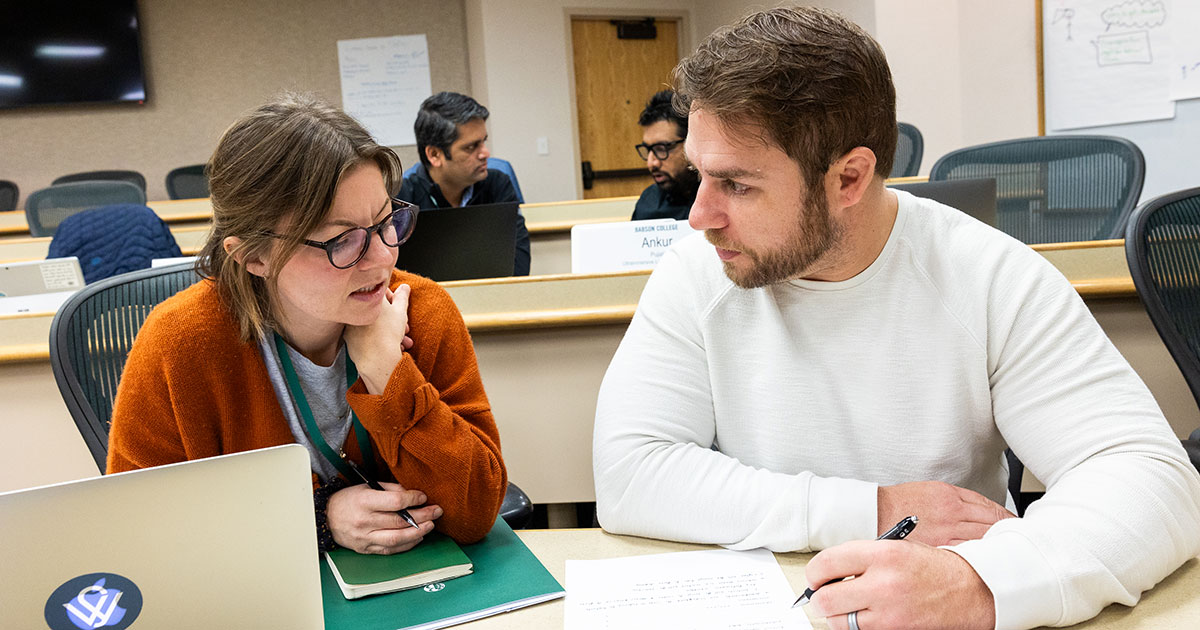How to Sell Disruption
Babson Professor of Marketing David Hennessey defines disruption in business as changing markets by “doing something in a significantly different way.” To an entrepreneur, the word implies a leap into a new paradigm for a product or service. Companies that start with a what if? attitude have grown to disrupt industries large and small, from commerce (Amazon) to movies and TV (Netflix) to waste management (BigBelly Solar, founded by Babson MBA Jim Poss).
It’s easy to see the value proposition in these successful businesses now that they are established, but each had to change established habits in their markets. Even with a compelling story to tell, one of the most difficult chores of disrupting a market is actually convincing people they should change. Selling disruption might be more difficult than creating it.
David Perla, co-founder of legal outsourcing firm Pangea3, notes that, “A disruptive business doesn’t sell against its competitors but against the status quo. Truly disruptive businesses have no competitors.” Perla labored in the early days of his company to sell his idea to skeptical customers, who clung to known work habits despite compelling efficiencies Pangea3 offered. (He and partner Sanjay Kamlani succeeded and sold Pangea3 to Thompson Reuters in 2010.)
Ultimately, selling a disruptive product is a matter of positioning it as an unexpected solution to a customer need, not as a bundle of features and benefits. Professor Hennessey lists key attributes of selling a disruptive product:
Provide high relative advantage: “A gigantic advantage over current solutions is compelling. If your product will cut customer costs 10 percent, she might not be interested. If you can cut costs 50 percent, she absolutely has to consider your solution.” For example, cloud computing can replace a company’s data center at a fraction of the cost; e-books replace printed book inventory and warehousing at a savings approaching 100%.
Make it easier to change: If your customer has to change his thinking about a product’s effect on his way of doing business, says Hennessey, it’s hard to comprehend the value versus the risk of changing. At Pangea3, Perla and Kamlani had to convince legal partnerships that outsourcing could work for professional services, not just customer help lines. Their solution was to guarantee quality and turnaround time to professional-level standards.
Address complexity by focusing on outcomes: BigBelly trash compactors cost more than garbage cans, but long-term savings for municipalities are the outcome because of a nonobvious quality: the compactors are networked and tell the city when to empty them, which makes trash pickup more efficient, saving money on fuel, trucks, and labor. The outcome is saving money, not advanced technology.
Anticipate hidden threats: Customers may wonder if a disruptive product contains hidden threats. For example, early adoption of collaboration software was slowed by concerns about security. Once large companies bought into the idea (calming security fears), others joined in.
Finally, it’s easiest to sell if the value proposition is obvious. Digital photography began with low-quality imitations of film cameras, and users processed digital files into printed pictures. A confluence of several technologies—cheap home photo printers, exponentially better cameras, flash storage, and Web-based photo storage and archiving—have changed photography forever.
Each of these developments was an observable and incremental improvement on the old snapshot experience, and thus not disruptive, but, taken together, they altered an industry (and sent slow-to-change companies such as Kodak into bankruptcy). Now, amateur photographers share photos on Flickr and even sell their snapshots on services such as iStockphoto. Cheaper, better, and even a moneymaker—that’s a compelling proposition, arrived at one disruptive step at a time.
Posted in Insights






